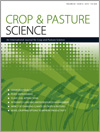CP18189TaqMan Multiplex Real-Time qPCR assays for the detection and quantification of Barley yellow dwarf virus, Wheat dwarf virus and Wheat streak mosaic virus and the study of their interactions
Real-time PCR assays were developed for simultaneous detection and quantification of three major viruses (BYDV, WDV, WSMV) of cereal crops, with worldwide importance. In a greenhouse study, WSMV titre was decreased approximately five times in mixed infections with BYDV or WDV as compared to the single WSMV infection. The results suggest antagonistic interactions among the viruses and the qPCR to be a high throughput standard for the plant-virus interactions study.





